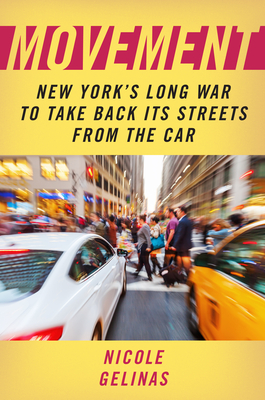You are here
Back to topMovement: New York's Long War to Take Back Its Streets from the Car (Hardcover)

$44.95
Not Yet Published
Description
A gripping account of how the automobile has failed NYC and how mass transit and a revitalized streetscape are vital to its post-pandemic recovery
In 1969, as all students of New York City history think they have learned, master builder Robert Moses lost his long battle to urbanist Jane Jacobs over his planned Lower Manhattan Expressway. The ten-lane elevated expressway would slice across SoHo and Little Italy, demolish historic buildings, and displace thousands of families and businesses. Jacobs and her neighbors defeated Moses, and as a result, New York became the only major American city with no interstate highway running through its core. Like many global cities, though, New York spent fifty years during the first half of the twentieth century trying and failing to tame its heavily populated landscape to fit the private automobile. New York has now spent more than fifty years trying to undo those mistakes, wresting back city space for people, not cars. Movement: New York's Long War to Take Back Its Streets from the Car chronicles the earlier, less-known battles that preceded the cancellation of the Lower Manhattan Expressway: Jacobs became an example for generations of urban planners, but whose example did Jacobs emulate, in an earlier victory that saved Washington Square Park? Moses may serve handily as New York's uber-villain now, but who, before him, was responsible for destroying a critical part of New York's transit system? Written by a well-known urban writer who has focused on New York's transportation system for more than a decade, author Nicole Gelinas resumes the story where Robert Caro's landmark The Power Broker ended. Movement explores how, in the half-century leading up to the COVID-19 pandemic, New York's re-embrace of its mass-transit system and a livable streetscape helped save the city. Gelinas tackles the 1970s environmental movement, the 1980s rebuilding of the subways, and more contemporary battles, from Mayor Bloomberg's push for more pedestrian plazas and bike lanes in the early 2000s, to transportation advocates' protests to prevent traffic deaths in the Mayor de Blasio era of the 2010s, to the battle against Uber and Lyft to take back New York's streets from reemerging gridlock over the half-decade leading up to the pandemic. Introducing a cast of new transportation heroes to rival Jane Jacobs (Shirley Hayes, Hazel Henderson, Richard Ravitch, Nilka Martell), and puncturing the myth of Moses as New York's anti-hero, Movement explores how New York City has helped redefine what it means to be a global city: not a place that is easy to drive through, but a place where people can take transit, walk, and bike to work, to school, or just for fun.About the Author
Nicole Gelinas is a regular columnist for the New York Post, a regularly quoted source for The New York Times and the Wall Street Journal, and a contributing editor to the Manhattan Institute's City Journal. She has covered New York's transportation issues for over a decade and is the author of the 2009 book on the global financial crisis, After The Fall: Saving Capitalism from Wall Street-and Washington.
